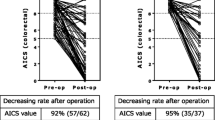Abstract
This paper reports the findings of the M.R.C., study into the use of the plasma CEA test for early detection of recurrence following "successful" surgery for colorectal carcinoma. This study was set up in 1973, and represents the largest series of patients published on this topic. It was primarily prospective, 468 patients being entered at the time of, or after the initial diagnosis of colorectal carcinoma. Follow-up was for at least 2 years, and both initially and throughout the follow-up the clinician treating the patient was kept "blind" to the patient's plasma CEA level. The general conclusion is that the CEA test provides a useful additional tool for the early detection of recurrence in these patients. Sixty-five per cent of patients with recurrence showed a raised plasma CEA level, and over half the patients who developed recurrence had a raised level some time before the disease was detected by other means. A surprising number of patients had a raised CEA level on a single occasion which subsequently returned to normal at the next follow-up and did not seem to be associated with malignancy. The problems associated with this type of study and their limiting effect on interpretation are discussed.
Similar content being viewed by others
Rights and permissions
About this article
Cite this article
Tate, H. Plasma CEA in the post-surgical monitoring of colorectal carcinoma. Br J Cancer 46, 323–330 (1982). https://doi.org/10.1038/bjc.1982.207
Issue Date:
DOI: https://doi.org/10.1038/bjc.1982.207
- Springer Nature Limited
This article is cited by
-
Value of carcinoembryonic antigen in the management of colorectal cancer
Diseases of the Colon & Rectum (1994)
-
The value of serum carcinoembryonic antigen in predicting recurrent disease following curative resection of colorectal cancer
Diseases of the Colon & Rectum (1994)
-
Tumor markers in cancer of the colon and rectum
Diseases of the Colon & Rectum (1991)
-
Late development of metachronous colorectal cancer
Diseases of the Colon & Rectum (1987)
-
Follow-up of colorectal cancer resected for cure
Diseases of the Colon & Rectum (1987)




